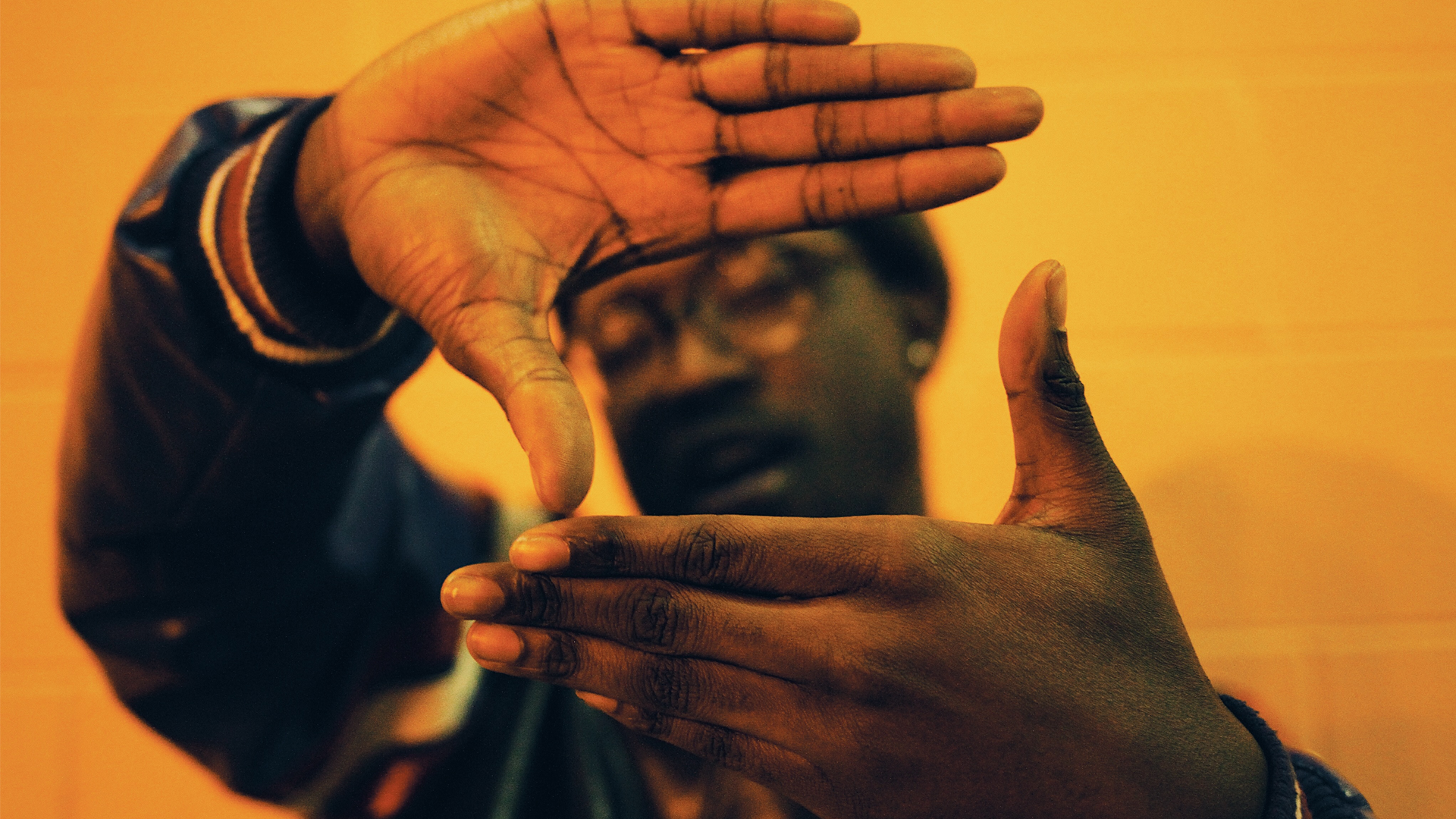Who Do You Think You Are?
Coming to Terms With Your Imperfect Self
If your sense of self-worth is tied to how you look (or how you think you look), it may help to understand what’s really going on inside your head.
Do you feel the pressure to be perfect? To live up to the standards of the society around you? To work out and diet so you can approach the airbrushed perfection that the fashion/film/fitness/entertainment industry puts forward as ideal?
For most, the pursuit of physical perfection is neither realistic nor achievable, and for some it leads to a crash. Still, the trend persists, and today it unfortunately affects a younger cross section of the population than in the past. A 2016 UK study, for example, found that only 61 percent of girls between 7 and 21 were happy with their appearance, down 12 points from five years earlier.
Along with several colleagues, Canadian psychologists Gordon Flett and Paul Hewitt have studied what they call “perfectionistic self-presentation.” Their research over the years indicated that trying to present a perfect image to the outside world, attempting to hide imperfections, being afraid even to disclose that any such imperfection may exist, “correlated positively with depression.” Though they found this to be particularly prevalent among the young, for whom social media serve as platforms on which to present themselves but also as sources of pressure to be seen to be perfect and living the perfect life, it’s clear that no one is immune.
Journalist and novelist Will Storr picks up on this phenomenon in his 2017 book Selfie. From the title one might expect a humorous takedown of millennial selfie culture and narcissism related to “doing everything for the ’gram”—though, like any generational stereotype, that one is neither accurate nor useful. The subtitle of the book, How We Became So Self-Obsessed and What It’s Doing to Us, suggests that Storr will go deeper.
As he points out early on, for many people who are concerned about appearing perfect, body image is critical. We tend to think of body-image issues affecting mostly women, but that’s been changing, says Storr. He cites a 2008 US study of adults with “body dysmorphic disorder” (an intense focus on body image and the perceived flaws in one’s appearance), which indicated that men and women suffer from it at nearly equal rates, and that it’s more common than schizophrenia and bipolar disorder. For males in particular, steroid use has been linked with “muscle dysmorphia,” a diagnosis now included in the American Psychiatric Association’s Diagnostic and Statistical Manual (DSM). Britain and other countries are similarly affected, with treatment for eating disorders and numbers of gym memberships both on the rise.
The intense pressure to be seen as perfect leads some to attempt self-harm or even to consider suicide. A 2017 meta-analysis found a significant link between perfectionism and suicide. If one never feels “good enough,” why continue to try?
While it may not go this far for most of us, we’re likely not untouched by perfectionist pressures. Do we edit our life before putting it on display, showing only the most presentable aspects—the pictures where we look the best; where we’re having the most fun, drinking the prettiest coffee, planting the most attractive succulents, riding the coolest roller coaster, visiting the most Instagrammable pop-up museum? Are we envious of others whose lives seem so much better? “Must be fun to be them.”
Another 2017 study bore out the growing scope of the problem. Psychologists reviewed survey responses from more than 41,000 American, British and Canadian college students over a 28-year period, finding that socially prescribed perfectionism had increased 32 percent. This is particularly concerning, as it’s one of the forms of perfectionism tied to depression and suicide.
The Self Is a Story
What is this thing we call the self? What is it that makes you you?
Rather than using a strictly scientific or materialist definition, Storr takes a simple view: the self is “the mechanism of wills, beliefs and personal qualities that combine to make us who we are. . . . Every self is different. . . . We feel its power: it’s the self that presses us into preoccupation with status, attraction, achievement, morality, punishment and perfection. We feel that it’s uniquely ‘us’ that gets involved in conflicts and loves and dreams, but that all humans repeat the same patterns of behaviour betrays the fact there are actually laws and functions in operation.”
Who do you think you are? That question can get to the heart of the issue faster than we may at first realize. Who we think we are is largely who we tell ourselves we are—the story we tell ourselves about ourselves.
“We need to consider . . . something important and disturbing about the human self: that it is built to tell us a story of who we are, and that that story is a lie.”
In considering what it means to be a conscious human, Storr sees it as a four-part experience: “Firstly, you have the experience of your senses—the sights, the sounds, the smells, the tastes, the physical sensations felt by the skin. Secondly, you have your sense of hallucinatory travel—your mind can summon images of past, future and fantasy. Thirdly, there is your emotional experience—that constantly churning ocean of fear, excitement, love, desire, hate and so on that writhes and swells beneath your days. Finally, you have your internal monologue, the chatty voice that narrates it all, interpreting everything that’s happening to you, discussing it with you, making theories about it, never shutting up.”
Storr remarks, “If the self is a story, then prepare to meet its slippery author,” that inner voice known as “the left-brain interpreter.”
In the 1960s, neuroscientist Michael Gazzaniga worked with epilepsy patients who had undergone split-brain surgery, in which the left and right halves of the brain were separated to prevent epileptic seizures from spreading across the whole brain. Though this didn’t stop seizures completely, they were generally less frequent and less severe, and patients were in many respects able to live quite normal lives after the surgery.
Gazzaniga’s interest in the groundbreaking surgery was that it brought to light a strange condition in our mental circuitry, highlighting significant differences in how each half of the brain processes information. Because the physical connection between left and right (a band of nerve fibers known as the corpus callosum) had been severed, the two halves could no longer transfer information to each other in order to quickly and holistically make sense of that information.
Capitalizing on the way the eyes communicate with the brain based on left and right visual fields, researchers were able to flash objects that only one side of the patient’s brain would see. For example, they showed one patient’s left brain a chicken claw, and the right a snowy landscape. Then they asked him to choose an appropriate image from a collection placed in front of him. His left hand (right brain) pointed to a snow shovel, appropriate to the snowy landscape, and his right hand (left brain) pointed to a photo of a chicken, based on the only image he was conscious of having seen. The chicken claw and chicken image obviously matched, but he needed to verbalize why the snow shovel was appropriate, so he said, “You need a shovel to clean out the chicken shed.” As Gazzaniga notes, “Immediately, the left brain [where the speech center is located], observing the left hand’s response without the knowledge of why it had picked that item, put it into a context that would explain it.”
The results of these experiments provided researchers with startling new insight into how the brain works. Storr highlights a potentially disturbing reality, however: “The discomforting truth is that we all have interpreters narrating our lives, and they’re all just guessing. We all confabulate, all the time,” he writes. “We’re moving around the world, doing things and feeling things and saying things, for myriad unconscious reasons, whilst a specific part of our brain constantly strives to create a makes-sense narrative of what we’re up to and why.”
“When we set out to explain our actions,” writes Gazzaniga, “they are all post hoc explanations using post hoc observations with no access to nonconscious processing.”
“That you that you are so proud of is a story woven together by your interpreter module to account for as much of your behavior as it can incorporate, and it denies or rationalizes the rest.”
The truth of the matter, he concludes, is that “listening to people’s explanations of their actions is interesting . . . but often a waste of time.”
We naturally want to believe we’re in general control of our thoughts and feelings, that our reactions are justified, that our perspectives and preferences are logical and defensible—normal. But it turns out that when we tell ourselves a story about why we do something, we may be inventing it, guessing at our reasons. Might our interpreter be guessing incorrectly? And if so, why?
Gazzaniga’s research helps us understand that there’s an element in our unconscious mind that seeks to make sense of the world. But we want it to make sense in a way that makes us look good, logical, appropriate. And so we rationalize our behavior: we aren’t bad people, so we must have had a good reason for doing this, for thinking that. We cut ourselves a lot of slack. It can be difficult to clearly see our own biases, and even more difficult to see past them.
“Because of the way our brains function,” Storr points out, “our sense of ‘me’ naturally runs in narrative mode: we feel as if we’re the hero of the steadily unfolding plot of our lives, one that’s complete with allies, villains, sudden reversals of fortune, and difficult quests for happiness and prizes. Our tribal brains cast haloes around our friends and plant horns on the heads of our enemies.”
Our inner narrator gets even more creative when we’re confronted with other people’s stories, the “perfect self” they put forward on social media and in other social interactions. The self-doubt their stories may stir in us can be very discouraging, and it pressures us to further rationalize and so improve our own story.
“The human mind is more deceitful than anything else,” wrote the ancient Hebrew prophet Jeremiah. We have an innate capacity for self-deception—self-deceit—and we don’t naturally recognize it.
What story do you tell yourself? Is it an honest story? Who do you think you are?

The Self Is Culture
Our concept of self is largely psychological, located inside the brain. But there’s more to it.
As sociologist John Hewitt told Storr, “the brains we have and the psychology those brains produce is important, but it doesn’t explain many of the things we’d like to explain, whereas culture and society do.” This led Storr to wonder, “To what extent, then, are we the culture we’re born into?” Hewitt suggests that culture makes up as much as 90 percent of who or what we are.
That’s a surprising idea. Would we really be 90 percent different if we grew up in a different culture?
To understand why this appears to be the case, we need to look at brain development. When we’re born our brain is a certain size, and it grows rapidly, increasing in weight and interconnections.
“The self’s ingestion of culture can be tracked, in a startling form, in the brain of the growing baby.”
“By the age of two,” Storr writes, “a human will have generated over a hundred trillion synapses, double that of an adult. So great is this extra brain functionality that youngsters even develop cognitive powers the rest of us lack.” This is one reason why learning another language is so much easier at a young age. “It’s believed that this is one of the ways the brain shapes itself to its environment,” says Storr.
But “by the end of this process individuals are left with far more neurons and synapses than are functionally needed and/or preferred,” explain psychologists Edalmarys Santos and Chad Noggle in the Encyclopedia of Child Behavior and Development. “Synaptic pruning is the process by which these extra synapses are eliminated thereby increasing the efficiency of the neural network. The entire process continues up until approximately 10 years of age by which time nearly 50 percent of the synapses present at 2 years of age have been eliminated.”
What’s taken away is likely just as significant as what remains in terms of how our culture defines us. “When we’re born,” writes Storr, “. . . our brain is ready for the world—or at least a world. It rushes out to greet it, gets to know it, then prunes itself down, specializing itself for the particular culture in which it finds itself.”
To begin to understand how this happens, we can study other cultures and notice the differences in peoples’ ideas of beauty—what they value. The typical cover model for a Western fitness magazine, for example, owes much to fairly recent changes in popular Western culture, which since the 1960s has dictated that thin is in. Historically, many cultures associated heavier weight with high status, beauty and marriageability. In some parts of the world this is still the case, though in any culture, standards of physical perfection can change over time.
Anyone who struggles with personal weight or appearance can identify with Storr’s own challenge: “When I feel an emotion of revulsion because my stomach is a long way from the ‘ideal’ shape, that’s my culture talking,” he summarizes. “I’ve absorbed it. It’s inside me. To a significant extent, it controls me, like a parasite, admonishing me when I stray too far from its models.”
Our internalized idea about physical beauty and perfection is only one example of how our culture shapes us. Consider the influence of our family as we take on or reject their values and belief systems. Our friends, acquaintances and colleagues provide a unique milieu in which we navigate social expectations. Ideas about class, gender and race are externally learned, through interaction with other people as well as through cultural products: books, films, music, social media and so forth. “We internalize these rules,” Storr writes, “then begin adhering to them as if they were laws of the universe.”
To what extent have we all taken on the ideas and values of our respective cultures, believing them to be “normal,” without questioning or testing them?
Time to Reassess
Is physical perfectionism, living the perfect Instagram life, worth valuing? Does it help us in any way to constantly check what everyone else is doing, posting, thinking, or commenting on in social media?
Our default inner voice is always talking to us, but it’s an unreliable narrator. On the one hand it tries to convince us that we’re fine, generally good, getting better; but it also sends us into the other ditch, convincing us to focus on a false ideal that we never can (nor should) achieve. Whichever self-appraisal ditch we end up in, a healthy self-respect or self-esteem will likely be the victim.
If our sense of self is a culturally bound story we tell ourselves, and if that story almost certainly isn’t true, then we need to stop listening long enough to see ourselves as we really are: imperfect human beings like everyone else.
Recognizing not only our propensity for self-deception but also the imperfections we share with the rest of the human race is a beginning toward becoming a better self. Finding the highest realistic standard to work toward is a critical next step.
How we look (or think we look) to others is far less important than knowing that we’re working to become not a more physically attractive person but a better person. That requires continuing effort, but with time and commitment, we’ll be able to evaluate ourselves in a much more realistic and meaningful way.



